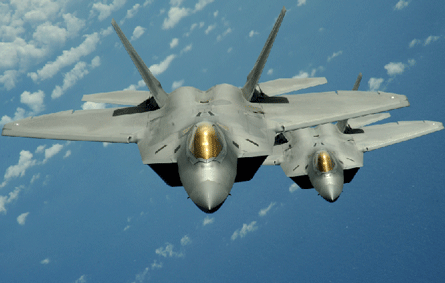A pending lawsuit by a Lockheed Martin-trained stealth expert may provide new perspective on concerns about the F-22's low observable, or stealth, systems.
Although no complaints about the F-22's ability to achieve its promised radar signature have surfaced in the public domain, there have been repeated issues with the safety and maintainability of the coatings that provide dissipate and absorb radar energy.
A recently unsealed, three-year-old legal case filed by Darrol Olsen, a former F-22 engineer, accuses Lockheed of knowingly using defective coatings for the F-22 in the mid-1990s, and covering up the problem by applying 272kg (600lb) worth of extra layers.
The Department of Justice declined an opportunity under the Fair Claims Act to pursue Olsen's case on the government's behalf. Olsen now plans to file an amended version of the unsealed complaint to the US District Court in California's central division.
In response to Olsen's allegations, Lockheed replied: "While we are aware of the Olsen lawsuit, the corporation has not yet been served in this matter. We deny Mr Olsen's allegations and will vigorously defend this matter if and when it is served."
 |
|---|
© US Air Force/Mst Sgt Kevin GruenwaldLockheed's use of coatings on the F-22 could come under court scrutiny |
Olsen wants to be reinstated with back-pay plus interest since being fired by Lockheed more than a decade ago, says Samuel Boyd, Olsen's attorney.
Olsen is also asking the court to order Lockheed to pay the US government $50 million for each of the 183 F-22s currently ordered, says Boyd. That amount equates roughly to the cost of the allegedly compromised stealth technology on each jet.
Olsen began his Lockheed career in 1979 at Skunk Works, where he worked on developing new composite materials for the F-117, according to court documents. Olsen bounced between the F-117 and Northrop's B-2 programme during the 1980s, finally returning to support Northrop's B-2 flight test programme in 1990.
In 1995, Olsen finally joined Lockheed's materials and processes engineering group in Marietta, Georgia, to work on the low observables system for the F-22.
In 1998, Olsen claims he refused to participate in an award ceremony that falsely honoured his team for solving problems he knew still persisted.
Although Olsen was fired for "failure to follow instructions" in 1999, the lawsuit says, he believes the problems have never been fully addressed.
In March 2008, an F-22 sustained major damage after a small strip of stealth coating inside the engine nacelle peeled off and was ingested by the fan blades of the Pratt & Whitney F119 engine.
In November, John Young, who stepped down in May as undersecretary of defence for acquisition, technology and logistics, told reporters he was concerned about the F-22's stealth, or low observable, maintenance requirements.
"I would highlight in general the maintenance on the airplane is too high," Young said. "They're struggling with some of the LO and other issues, and there's clearly work that needs to be done there to make that airplane both capable and affordable to operate."
Source: Flight International























